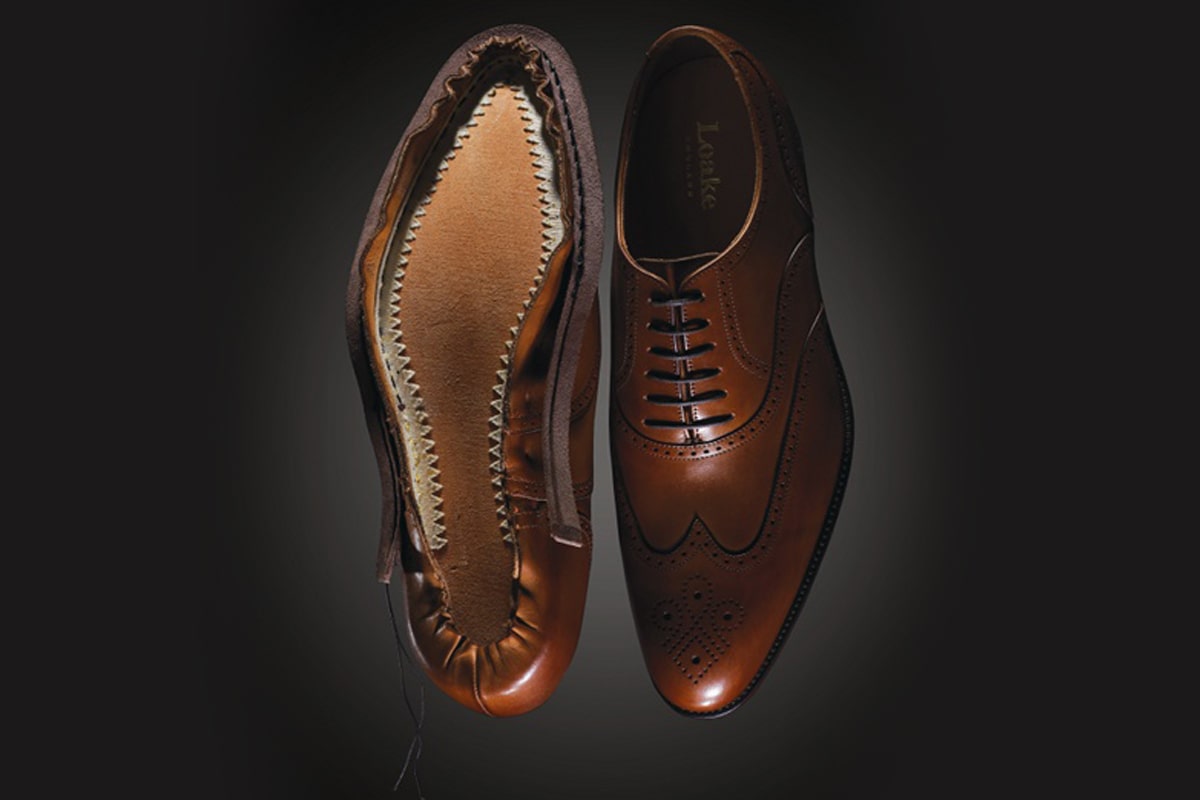
Perhaps surprisingly, the Goodyear Welt has nothing to do with car tyres – it’s a particular type of shoe construction, in which Loake has specialised for over 140 years.
The “welt” is a strip of leather which is sewn around the bottom edge of a shoe. This stitching (the welt seam) attaches the welt to both the insole and the upper of the shoe. The welt is folded out to form a point of attachment for the outer sole. The outer sole (two layers can be used in heavier shoes) is sewn to the welt, with a heavy-duty lock-stitch seam.
Crucially, this stitching runs around the outside of the sole (rather than piercing the part under the foot) to maximise the sole’s water-resistance. In contrast, the Blake construction (a widely used method for making formal shoes) involves stitching the outer sole directly to the insole, resulting in a seam that can sometimes be felt inside the shoe, and which is more likely to leak.
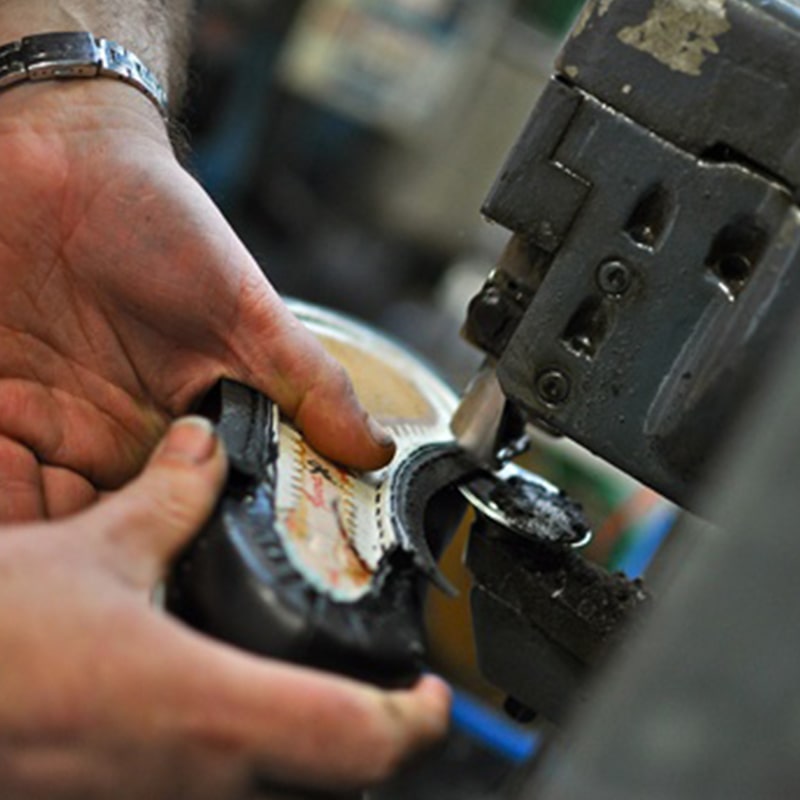
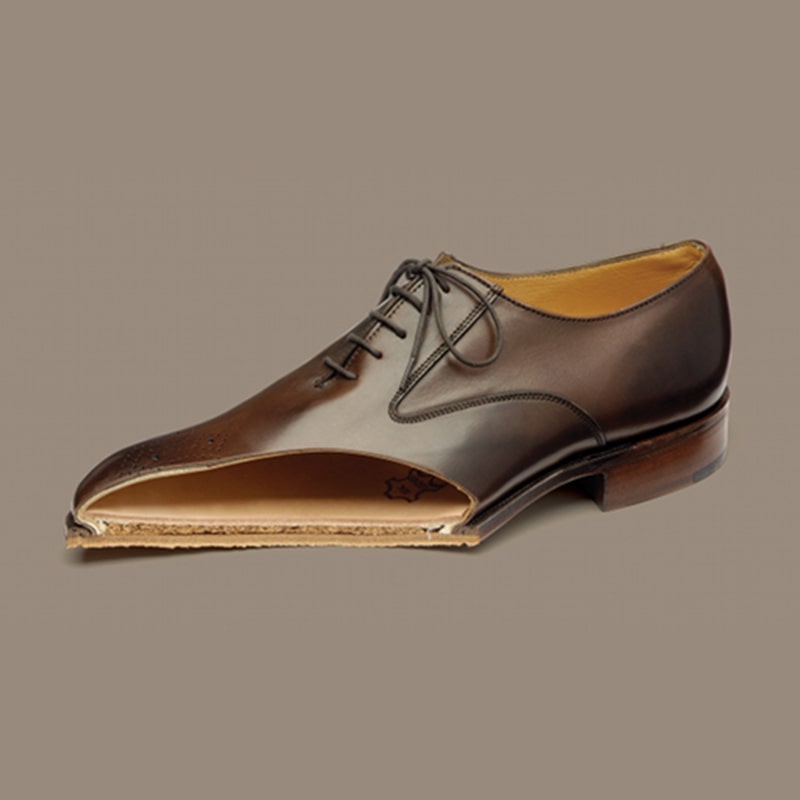
In goodyear welting construction, there is a thin cavity between the insole and the outer sole. We fill this with cork, a material that is lightweight, insulating, moulds to the shape of the foot – and, most importantly, breathes.
The disadvantage of the welted construction is that it can add bulk to the shoe, as its outer edges need to be wide enough to accommodate stitches. However, there are several significant advantages, in particular: they can be repaired more easily and they are more weather-resistant. Between the Italians and the British, you can probably guess who, historically, has chosen slim soles, and who has been more concerned with dry feet.
To find out more, take a look at our video below showing a few of the processes involved, shot inside our Northamptonshire factory, and narrated by Andrew Loake.
You can also browse our range of Goodyear welted shoes and boots, here.
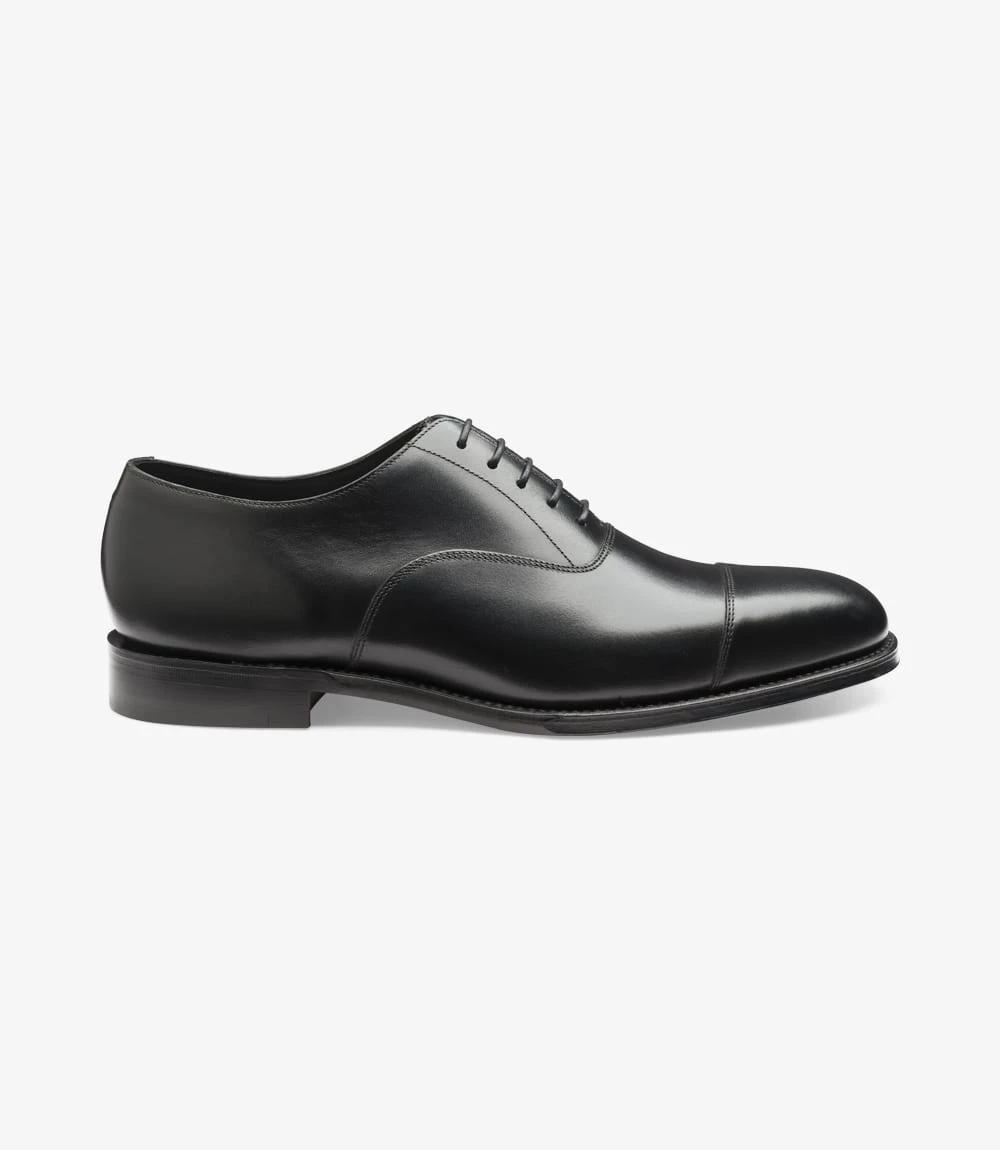
Handcrafted Iconic Styles
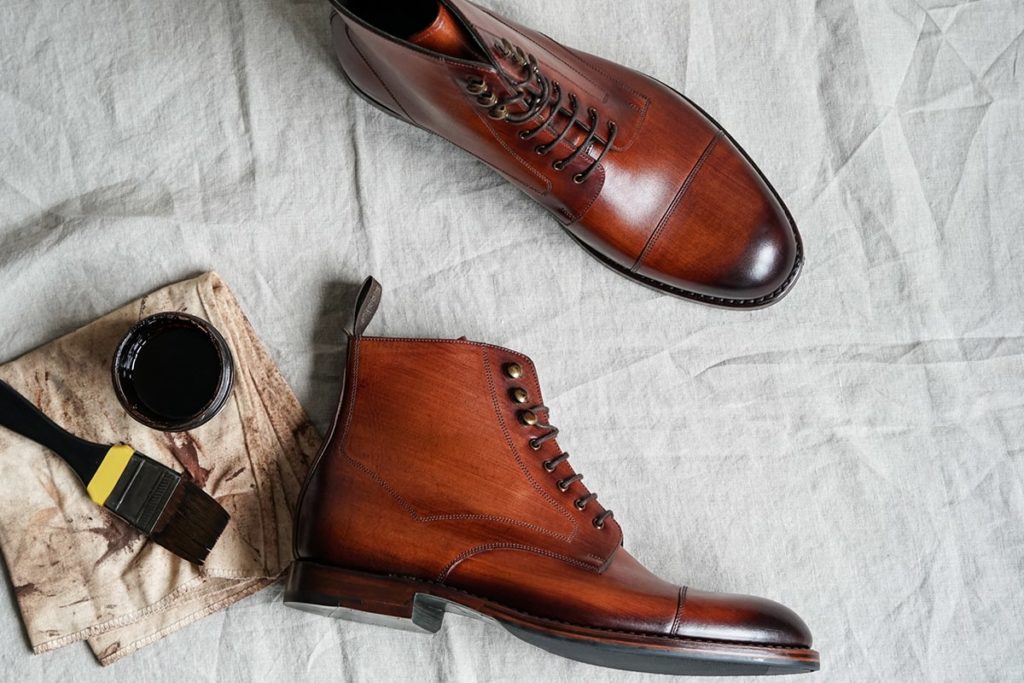
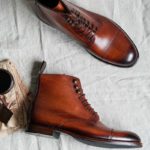
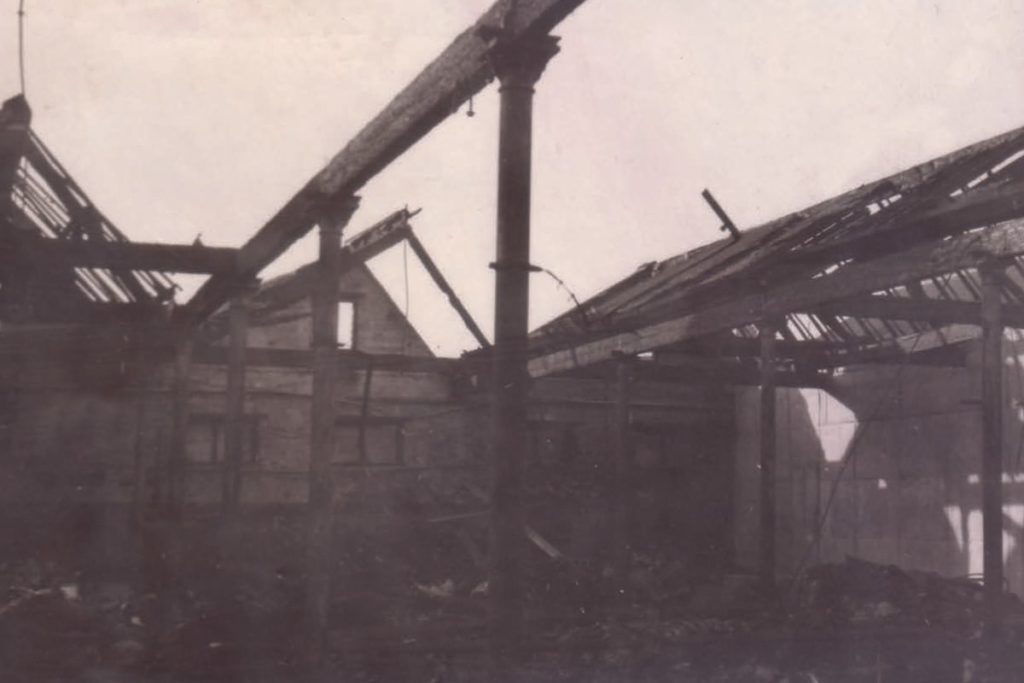

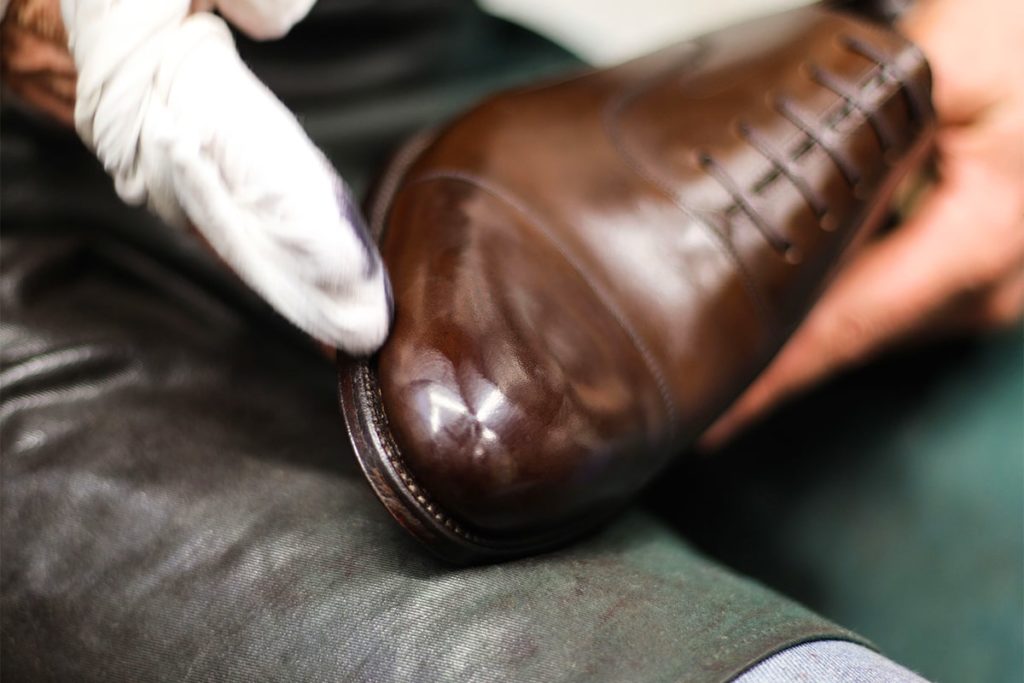
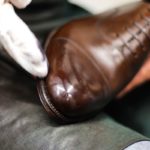
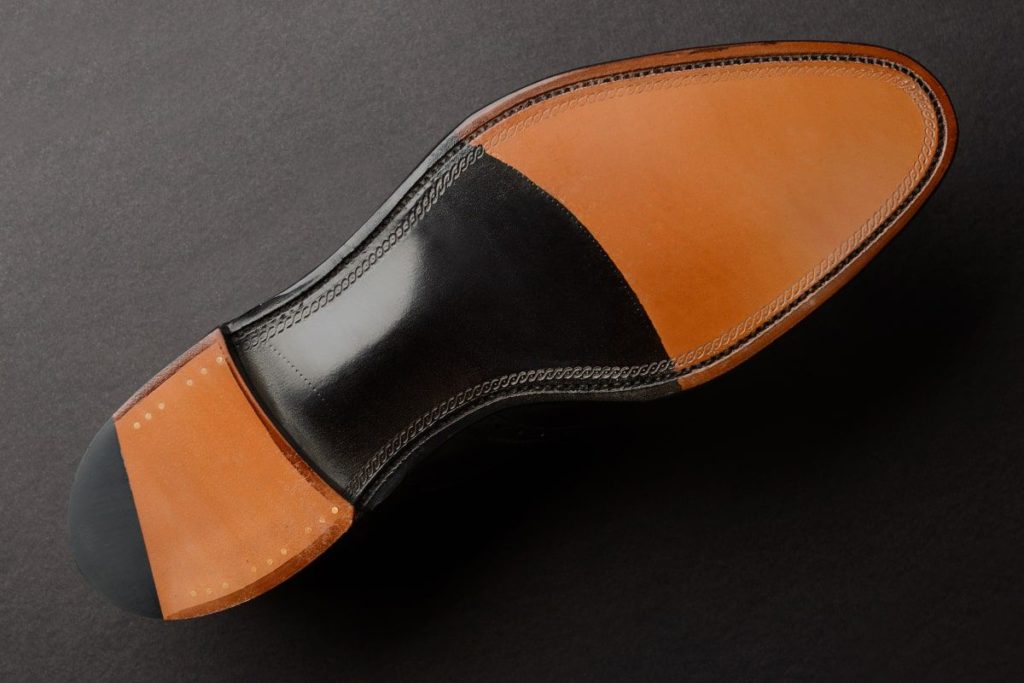
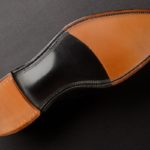
Isabel marant online
Wow, perfect. Fortunately, I found your website!
Loake
Thanks Isabel!
Peter Brown
Sorry if this is a foolish question, but if a mishap (a water splash from a passing car, for example) that deluges the shoe occurs, will that damage, or remain sodden in, the absorbent cork?
What should you do in such a situation? It happens a lot in London, we are famous for aiming for potholes. Obviously, it won’t involve artificial heat or direct sunlight. Will stuffing newspaper into them draw all the moisture out?
Loake
Hello Peter, thanks for your query – not foolish at all. The shoe should be left to dry away from sources of artificial heat as you suggest (using artificial heat can weaken the fibres of the leather and cause cracking as you may know). If you stuff the shoes with newspaper, or use a cedar wood shoe tree this will help draw out the moisture.
The sole etc shouldn’t be adversely affected long term by a one off saturation, some calf leathers may become stained, however it is often possible to remove this with the re-application of shoe cream and wax polish once dry. It is not advised to get suede shoes very wet, as these will almost certainly stain and it is difficult if not impossible to resolve.
Hope this helps!
Wayne Robertson
Sorry I meant welted. Autocorrection sometimes can let you down!
Wayne Robertson
Thank you for that I have always wondered about wilted soles and what it really means. And mow I know. Well written and simple for ordinary folks like me.
Cheers
Wayne R.
Loake
Hello Wayne, thanks so much for your comment. We’re always happy to receive feedback and glad you like the post.